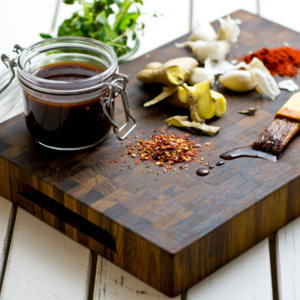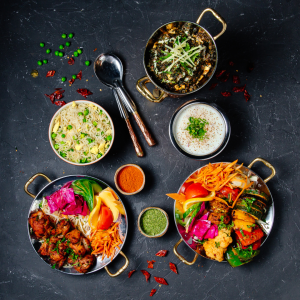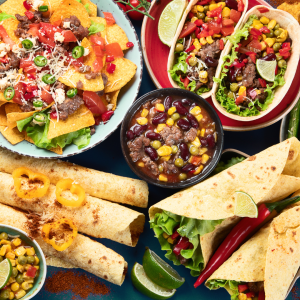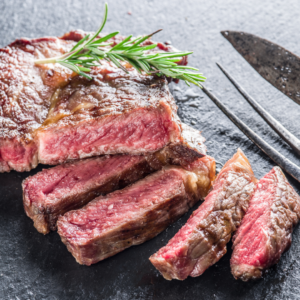
Steak lovers, rejoice! There’s nothing quite like sinking your teeth into a perfectly cooked steak. Whether you’re grilling in your backyard, dining out at a fancy restaurant, or simply trying to impress your friends and family, knowing your steak cuts is essential. In this beginner’s guide, we’ll explore the world of steak cuts, helping you choose the best one for your next meat delivery. So, let’s dive right in!
The Basics: What Makes a Great Steak?
Before we jump into specific cuts, it’s essential to understand what makes a great steak. Several factors contribute to the overall quality and taste of a steak:
1. Marbling
Marbling refers to the tiny flecks of fat within the muscle fibers of the steak. It adds flavor and juiciness to the meat. The more marbling, the better the steak’s taste. Look for steaks with even distribution of fat throughout.
2. Grade
Steaks are typically graded as Prime, Choice, or Select, with Prime being the highest quality. Prime steaks have the most marbling and tend to be the most tender and flavorful. Choice and Select are also good options but may have slightly less marbling.
3. Aging
Aging is a crucial process that enhances the tenderness and flavor of the steak. Dry aging and wet aging are the two common methods. Dry-aged steaks have a more concentrated flavor, while wet-aged steaks are more tender.
4. Cut
Different cuts of steak come from various parts of the animal, and each cut has its unique flavor, tenderness, and texture. Let’s explore some of the best cuts you can find.
The Top Steak Cuts
1. Ribeye
Description: The ribeye steak is a favorite among steak enthusiasts for its incredible marbling and rich, beefy flavor.
Cooking Method: Best grilled or pan-seared to medium-rare or medium.
Tips: Allow the steak to rest after cooking to let the juices redistribute. Season with just salt and pepper to let the meat’s flavor shine.
2. New York Strip
Description: Also known as the strip steak or sirloin steak, the New York strip is known for its leaner profile and a robust, meaty flavor.
Cooking Method: Excellent for grilling, broiling, or pan-searing to medium-rare or medium.
Tips: Sear the steak over high heat for a delicious crust, and use a meat thermometer to achieve the desired doneness.
3. Filet Mignon
Description: The filet mignon, often called the “king of steaks,” is prized for its tenderness and mild, buttery flavor.
Cooking Method: Best cooked using a combination of pan-searing and oven roasting to achieve medium-rare or medium doneness.
Tips: Wrap the filet in bacon for added flavor and moisture, or serve it with a flavorful sauce like Béarnaise.
4. T-Bone
Description: The T-bone steak features a T-shaped bone with meat on both sides. It combines the tenderness of the filet mignon and the rich flavor of the New York strip.
Cooking Method: Perfect for grilling or broiling to medium-rare or medium.
Tips: Use a two-zone grill to cook the filet and strip sides to their ideal doneness simultaneously.
5. Porterhouse
Description: Similar to the T-bone, the porterhouse steak is even larger and offers a generous portion of both filet mignon and New York strip.
Cooking Method: Ideal for grilling to medium-rare or medium.
Tips: Allow the steak to rest before slicing and serving to ensure the juices are evenly distributed.
6. Sirloin
Description: The sirloin steak is a versatile and budget-friendly option with a balanced flavor and moderate marbling.
Cooking Method: Suitable for grilling, broiling, or pan-searing to medium or medium-well.
Tips: Marinate sirloin for added flavor and tenderness, and be mindful not to overcook it to maintain juiciness.
7. Flank Steak
Description: Flank steak is a lean and flavorful cut, known for its bold, beefy taste.
Cooking Method: Best when marinated and grilled or broiled to medium-rare.
Tips: Slice flank steak thinly against the grain to maximize tenderness, and use it in fajitas, stir-fries, or sandwiches.
8. Skirt Steak
Description: Skirt steak is a thin, long cut with intense beefy flavor, perfect for marinating and grilling.
Cooking Method: Grill quickly over high heat to medium-rare or medium.
Tips: Be sure to slice skirt steak against the grain for maximum tenderness and use it in tacos or as a fajita filling.
9. Hanger Steak
Description: Hanger steak, also known as the butcher’s steak, is a flavorful, somewhat underrated cut.
Cooking Method: Ideal for grilling or pan-searing to medium-rare.
Tips: Slice hanger steak thinly, and serve it with chimichurri sauce or a flavorful marinade.
10. Chuck Eye Steak
Description: The chuck eye steak is often referred to as the “poor man’s ribeye” because it comes from the same region of the cow.
Cooking Method: Best grilled or pan-seared to medium-rare or medium.
Tips: Season generously and cook quickly to maintain tenderness and flavor.
Choosing the Right Steak for Your Meal
Now that you’re familiar with some of the best steak cuts, how do you choose the right one for your meal? Here are a few considerations:
1. Budget
If you’re on a budget, cuts like sirloin, flank steak, and chuck eye steak offer great value without compromising on flavor.
2. Occasion
Consider the occasion and the level of formality. Filet mignon or ribeye is perfect for special occasions, while sirloin or flank steak is great for casual gatherings.
3. Cooking Method
Think about how you plan to cook the steak. Some cuts, like ribeye and New York strip, are excellent for grilling, while others, like filet mignon, benefit from a combination of searing and roasting.
4. Personal Preference
Ultimately, your personal taste should guide your choice. If you love intense marbling and rich flavor, go for ribeye or T-bone. For a milder taste and exceptional tenderness, opt for filet mignon.
Tips for Cooking the Perfect Steak
Now that you’ve selected your steak cut, here are some tips to ensure you cook it to perfection:
1. Bring the Steak to Room Temperature
Allow your steak to sit at room temperature for about 30 minutes before cooking. This ensures even cooking.
2. Season Well
Season your steak liberally with salt and pepper just before cooking. The salt helps to enhance the flavor and create a delicious crust.
3. Get the Grill or Pan Hot
Preheat your grill or pan to high heat before adding the steak. A hot surface ensures a good sear.
4. Use a Meat Thermometer
For precise doneness, use a meat thermometer to check the internal temperature. The temperatures for different levels of doneness are as follows:
- Rare: 120-125°F (49-52°C)
- Medium-rare: 130-135°F (54-57°C)
- Medium: 140-145°F (60-63°C)
- Medium-well: 150-155°F (65-68°C)
- Well-done: 160°F (71°C) and above
5. Let It Rest
After cooking, let your steak rest for a few minutes under aluminum foil. This allows the juices to redistribute and keeps the steak juicy and tender.
In Conclusion
Choosing the best cut of steak for your meal doesn’t have to be intimidating. By considering factors like budget, occasion, cooking method, and personal preference, you can confidently select the perfect steak for your next culinary adventure. Armed with the right knowledge and cooking tips, you’ll be well on your way to savoring the delicious world of steak. Happy grilling!













